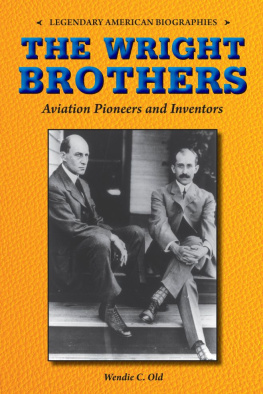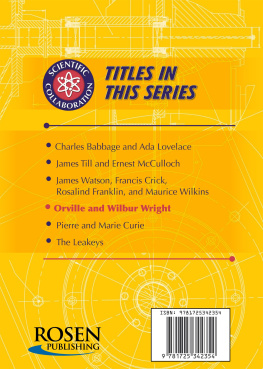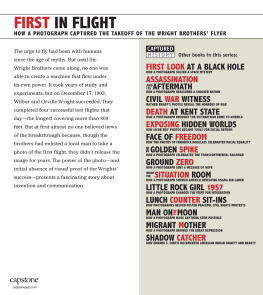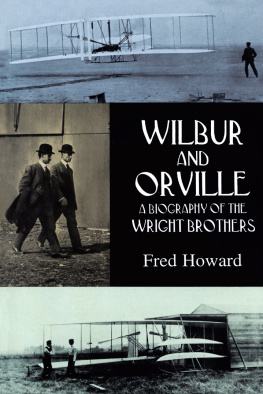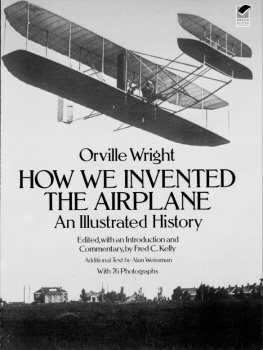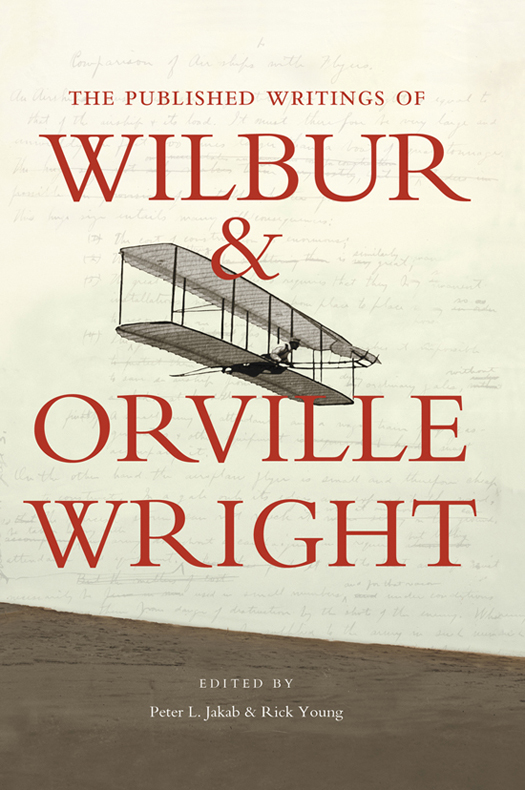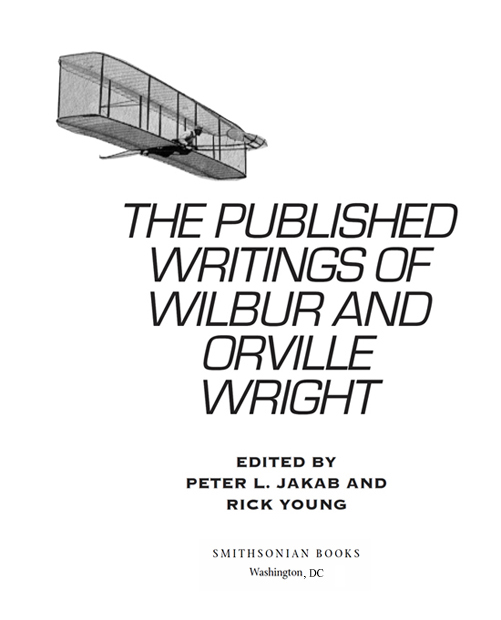SMITHSONIAN HISTORY OF AVIATION SERIES
VON HARDESTY, Series Editor
On December 17, 1903, human flight became a reality when Orville Wright piloted the Wright Flyer across a 120-foot course above the sands at Kitty Hawk, North Carolina. That awe-inspiring twelve seconds of powered flight inaugurated a new era. The airplane quickly evolved as a means of transportation and a weapon of war. Flying faster, farther, and higher, airplanes soon encircled the globe, dramatically altering human perceptions of time and space. The dream of flight appeared to be without bounds. Having conquered the skies, the heirs of the Wrights eventually orbited the Earth and landed on the Moon.
Aerospace history is punctuated with extraordinary feats of heroism and technological achievement. But that same history also showcases the devastating impact of aviation technology in modern warfare. The airplaneas with many other important technological breakthroughshas provided safe, reliable, and inexpensive travel for millions. Vertical flight continues to play a key role in rescue and communications.
International in scope, this scholarly series includes original monographs, biographies, reprints of out-of-print classics, translations, and reference works. Both civil and military themes are included, along with studies related to the cultural impact of the airplane. Together, these diverse titles contribute to our overall understanding of aeronautical technology and its evolution.
Associate Series Editor: Michael Gorn, historian
Advisory Board: Horst Boog, historian, Germany; Tom D. Crouch, National Air and Space Museum; Carl-Fredrik Geust, independent scholar, Finland; John T. Greenwood, Center for Military History; R. Cargill Hall, NRO Historian; Roger D. Launius, chief historian, National Aeronautics and Space Administration; Felix Lowe, publisher, South Carolina; Howard McCurdy, American University; Stephen McFarland, Auburn University; John H. Morrow Jr., University of Georgia; Richard J. Overy, Kings College, London; Dominick Pisano, National Air and Space Museum; Robert van der Linden, National Air and Space Museum; Kenneth Werrell, Radford University; Christine White, Pennsylvania State University; Robert Wohl, University of California at Los Angeles
2000 by the Smithsonian Institution
All rights reserved
Copy editor: D. Teddy Diggs
Production editor: Ruth Thomson
Designer: Janice Wheeler
Library of Congress Cataloging-in-Publication Data
Wright, Wilbur, 18671912.
[Selections. 2000]
The published writings of Wilbur and Orville Wright / edited by Peter L. Jakab and Rick Young.
p. cm. (Smithsonian history of aviation series)
Includes bibliographical references.
ISBN 1-56098-938-6 (cloth : alk. paper)
1. Wright, Wilbur, 18671912 Archives. 2. Wright, Orville, 18711948 Archives.
3. AeronauticsUnited StatesHistory Sources. I. Wright, Orville, 18711948. II. Jakab, Peter L. III. Young, Rick (Richard Leo). IV. Title. V. Series.
TL540.W7A25 2000
629.130922dc21
[B] 99-39653
British Library Cataloguing-in-Publication Data are available
For permission to reproduce illustrations appearing in this book, please correspond directly with the owners of the works, as listed in the photography credits. The Smithsonian Institution Press does not retain reproduction rights for these illustrations individually or maintain a file of addresses for photo sources.
Ebook ISBN: 978-1-58834-549-3
v3.1
AVIATION HAS GONE BEYOND MY DREAMS.
Orville Wright, June 1929
CONTENTS
ACKNOWLEDGMENTS
AT THE COMPLETION OF ANY book project there are always many debts. Some are great, some small, but all equally deserving of recognition. The following individuals and organizations were particularly helpful in the preparation of The Published Writings of Wilbur and Orville Wright. First and foremost, Rick Young, his brother Bill Young, and his wife, Sue Young, and Lee Mintz merit a resounding thank-you. They collected and transcribed nearly all of the articles in , forming the core of the book. Their labors are heartily appreciated.
Mark G. Hirsch of the Smithsonian Institution Press and Von D. Hardesty, curator at the National Air and Space Museum (NASM) and editor of the Smithsonian History of Aviation book series, offered initial interest and support for the project. Von also, along with NASM curators Michael J. Neufeld and Tom D. Crouch, provided useful advice on format and editorial questions. Dominick A. Pisano, chairman of the Aeronautics Division, NASM, and John D. Anderson, also a member of the Aeronautics Division, contributed a helpful review of the introduction and a number of the more complex annotations. John H. Morrow Jr., of the University of Georgia, and Marc Rothenberg, Editor, Joseph Henry Papers Project, Smithsonian Institution, made useful overall comments on the manuscript. NASM volunteer Theodore M. Hamady provided valuable research assistance. Elaine Cline, NASM librarian, shared her expertise regarding copyright issues for previously published historical material.
Libraries and archives are of course the lifeblood of any scholar. Several institutions were critical to the success of this project. The Library of Congress, Wright State University Libraries, the National Air and Space Museum Library and Archives, the Smithsonian Institution Archives, Roesch Library at the University of Dayton, and the Dayton and Montgomery County Public Library each played an important role.
Finally, thanks go to the NASM Photography Department for reproducing the illustrations.
P ETER L. J AKAB
INTRODUCTION
THE INVENTION OF THE AIRPLANE by Wilbur and Orville Wright is one of the great stories in American history. It entails the creation of a world-changing technology at the opening of an exciting new century, an era full of promise and confidence in the future. At the center of this tale are two talented, yet modest, midwestern bicycle-shop proprietors whose inventive labors and achievement transformed them from respected small-town businessmen into international celebrities. The account of the brothers aeronautical work is a treat for the student of intellectual and technical creativity. The influence of their invention on the twentieth century is beyond measure. The transport by air of material and people, quickly and over great distances, and the military applications of flight technology have had an incalculable economic, geopolitical, and cultural impact all over the globe. The Wrights invention not only solved a long-studied technical problem but helped fashion a new world.
The compelling story of the Wright brothers has been told in no fewer than eight full-scale biographies. The most detailed and textured account of their lives can be found in Tom D. Crouchs The Bishops Boys: A Life of Wilbur and Orville Wright. Fred Howards Wilbur and Orville: A Biography of the Wright Brothers and Harry Combss Kill Devil Hill: Discovering the Secret of the Wright Brothers also offer accurate and useful overviews of the Wrights achievement. The most complete discussion of the brothers inventive process and their aeronautical work is Peter L. Jakabs Visions of a Flying Machine: The Wright Brothers and the Process of Invention. These books go far toward chronicling and interpreting the life and work of the Wrights, but they are, of course, secondary treatments. Fortunately for all of those interested in the detail of the Wright story, Wilbur and Orville left behind a vast amount of primary material.


